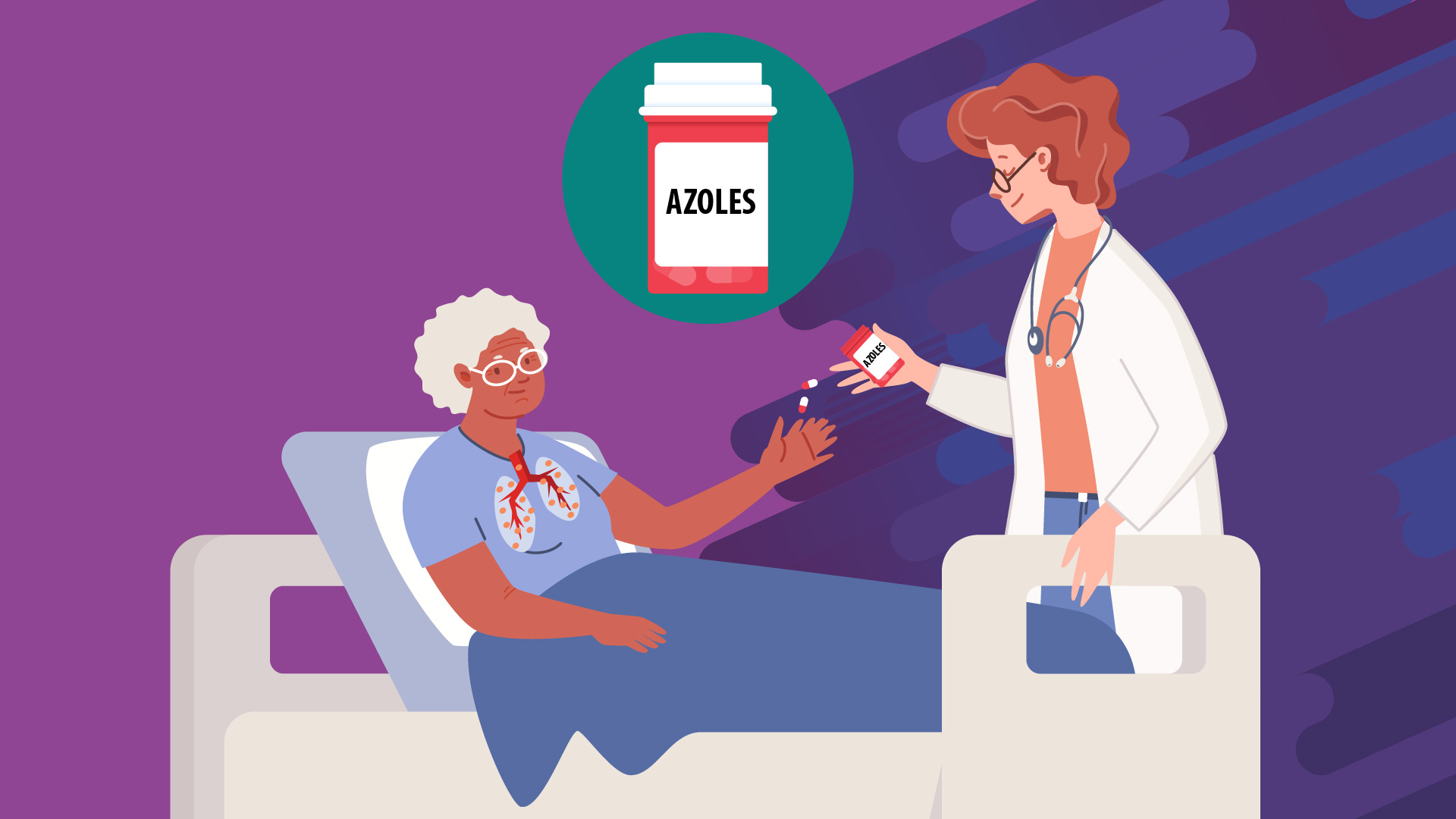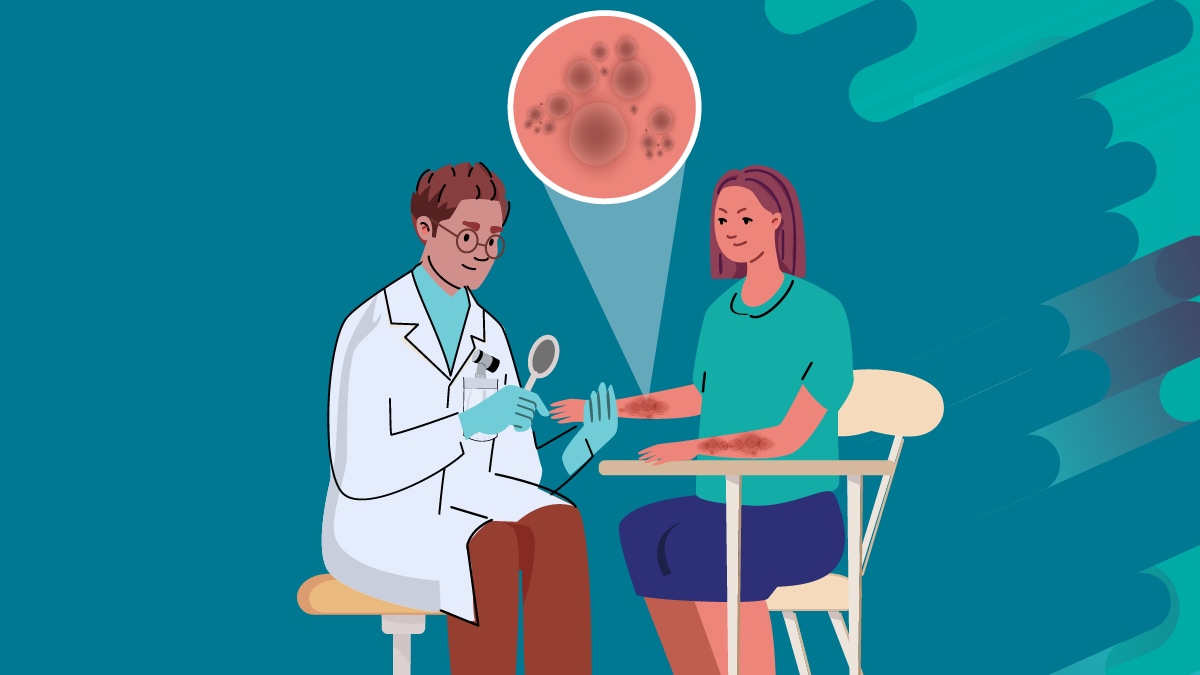About
- Appropriate use of antifungals improves outcomes and can help prevent resistance.
- Antifungals tend to require longer use and cause more side effects than other antimicrobials.
- The number of antifungals available to treat severe fungal infections is limited.

Medication options
Antifungals are antimicrobial medications that target fungal cell components disrupting fungal growth and survival. Antifungals can be topical (e.g., cream, ointment, powder, shampoo), oral (e.g., tablets, capsules, troches, rinse), or intravenous (IV) formulations.
Classes of antifungals
Antifungals typically belong to one of three main classes: azoles, echinocandins, and polyenes. Squalene epoxidase inhibitors are usually only used in fungal skin infections. Glucan synthase inhibitors only contain one antifungal and are novel, first-in-class compounds.
| Class | How it works | Examples |
|---|---|---|
| Azoles | Inhibits a cytochrome P450 enzyme, disrupting membrane structure and function and inhibiting fungal cell growth | Fluconazole, itraconazole, voriconazole, miconazole, clotrimazole |
| Echinocandins | Interferes with fungal cell wall synthesis (β (1,3)-d-glucan), leading to lysis and cell death | Caspofungin, micafungin, anidulafungin, rezafungin |
| Polyenes | Disrupts fungal cell membranes, leading to cell death | Amphotericin B, nystatin |
| Squalene Epoxidase Inhibitors | Inhibit the squalene epoxidase enzyme, leading to toxic sterol accumulation and cell death | Terbinafine, naftifine, butenafine |
| Glucan synthase inhibitor | Interferes with fungal cell wall synthesis (β (1,3)-d-glucan), leading to cell lysis and death | Ibrexafungerp |
| Others | Disrupts fungal cell division and DNA synthesis | Griseofulvin, Antimetabolites |

*Shaded antifungals are the most commonly used
Prolonged use and side effects
Taking antifungals can be challenging for patients. Many antifungals require prolonged use to effectively treat an infection. Depending on the type and severity of infection, a patient may be on an antifungal for months or even years.
Antifungals may also cause more side effects than other antimicrobials. Fungal cells are similar to human cells so medications for fungi can also harm human cells.
Common side effects include:
- Gastrointestinal issues such as nausea, vomiting, and diarrhea
- Abdominal pain
- Headaches
- Skin rashes or irritation
More severe side effects include liver toxicity with certain azoles and kidney damage with amphotericin B. Closely monitor for these side effects during treatment.
Appropriate use
Antifungal medications should be administered carefully at the appropriate dose and duration.
Topical antifungals and topical corticosteroids
Avoid combination antifungal and corticosteroid topical medications. The corticosteroid component is often medium- or high-potency and can worsen fungal skin infections. This can lead to longer treatment duration, side effects, or the development of resistance.
The most commonly prescribed topical antifungal-corticosteroid, clotrimazole-betamethasone dipropionate, contains a high-potency corticosteroid. Whenever possible, use antifungals without topical steroids. Diagnostic testing to confirm fungal infection is ideal, if feasible.

Therapeutic Drug Monitoring
Therapeutic Drug Monitoring (TDM) is the practice of measuring drug levels in a patient's bloodstream at designated intervals. TDM helps to personalize antifungal treatment by adjusting doses to achieve effective drug concentrations while minimizing toxicity.
Routine TDM is beneficial for medications with unpredictable absorption and/or potential drug interactions, such as itraconazole, posaconazole, and voriconazole.
In certain populations, TDM can be helpful for fluconazole and isavuconazole, such as patients
- Younger than 18 years old
- With unique health conditions (e.g., receiving continuous renal replacement therapy)
Time intervals for checking drug levels depends on the time it takes for the medication to reach a stable concentration. Target ranges vary by the type of antifungal and on whether they are being used for prevention or treatment. Staying within these ranges helps balance effectiveness and safety.
The need for new antifungal development
Treatment options for antifungals are limited compared with medications for bacterial or viral infections. Current antifungal treatments often face substantial challenges, including:
- Toxicity
- Limited availability
- High cost
- Difficulties in achieving appropriate dosing and duration
Development of additional antifungals is essential to combat the growing issue of antifungal resistance.
Advances are being made with new classes and improved formulations, such as once-a-week dosing, to provide safer, more effective treatment options for patients.

Global access to antifungals
In low- and middle-income countries, many people cannot afford life-saving antifungal medications. Additionally, access to healthcare may be more difficult or require traveling long distances.
Fungal neglected tropical diseases are more common in these regions. These infections often require the use of an antifungal for months or years.
Over 78 million people globally do not have access to itraconazole. Clinicians may resort to using oral ketoconazole, which has severe liver toxicity risks and should be avoided in fungal infections.
